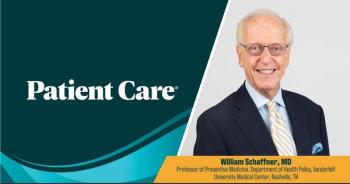
ACEP: Crowded EDs Slow Delivery of Antibiotics for Pneumonia
NEW ORLEANS -- The age of patients, how they ride to the emergency department, and how busy it is on arrival all factor in to whether those with pneumonia get antibiotics within the recommended four hours.
NEW ORLEANS Oct. 16 -- The age of patients, how they ride to the emergency department, and how busy it is on arrival all factor in to whether those with pneumonia get antibiotics within the recommended four hours.
So reported physicians from Mount Sinai in New York, who found that older patients, those transported by emergency medical services, and those who spent the least time waiting to be seen were most likely to receive antibiotics within the four-hour window.
"As measured in our study, the patient length of stay is significantly associated with a delay to delivery of antibiotics thus indicating that crowding has some impact on the timeliness of pneumonia care," wrote Phillip Andrus, M.D., and colleagues in a poster presentation at the American College of Emergency Physicians meeting here.
Although their data suggest that patients most at risk from pneumonia -- namely the acutely ill elderly -- are receiving appropriate antibiotic therapy in a timely fashion, more attention needs to be paid to ensure that all patients also received necessary treatment within the guidelines, the authors suggested.
"To improve the timeliness of pneumonia care, emergency departments should focus their performance improvement efforts on walk-in, non-elder patients with lower acuity of illness at presentation" they wrote. "More validated measures of crowding are needed to better delineate the effects of crowding on the timeliness and quality of care."
Getting drugs to pneumonia patients faster requires a coordinated, multisystem approach, Dr. Andrus said.
"At triage, the triage nurse marks the record as a 'red' patient, which is the highest acuity, so that someone will jump on that and take care of them quickly," he said. The triage nurse can also order x-rays for faster turnaround of results, and the hospital has added radiology staff to improve test processing, he said.
"We talk about this every two weeks at our faculty meeting, we emphasize it to the residents we work with, and the nursing staff is educated by their administrators as well," Dr. Andrus said.
To determine the factors affecting time to delivery of antibiotics in adult patients with pneumonia, the investigators conducted a retrospective review of emergency department records for all patients ages 18 and older who were admitted with an ED diagnosis of pneumonia during the first six months of 2005.
The data collection was part of an institution-wide effort to comply with Medicare and Medicaid core measures.
They collected data on patient age, gender, source and mode of arrival, date and time of arrival, date and time of antibiotic delivery, ED length of stay, hospital occupancy for day of arrival, and ED census for the day of arrival.
They used the Emergency Severity Index as a surrogate for severity of illness. They determined statistical significance with chi-square testing.
A total of 343 patients were admitted with an ED diagnosis of pneumonia during the six-month study period.
When the investigators looked at factors associated with faster antibiotic delivery times, they found that patients with shorter ED length-of-stay were more likely to get the drugs within four hours of triage (88% in the highest quartile for short length of stay, compared with 57% for the lowest quartile, P
Newsletter
Enhance your clinical practice with the Patient Care newsletter, offering the latest evidence-based guidelines, diagnostic insights, and treatment strategies for primary care physicians.


















































































































































































































































































